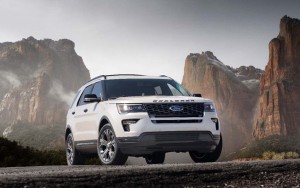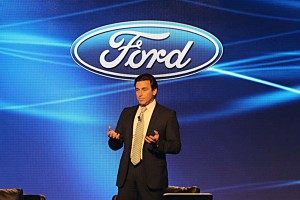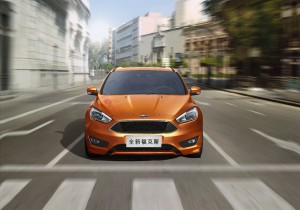A flurry of headwinds put the drag on Ford Motor Co. earnings during the first quarter of 2017, the numbers dropping 35% to $1.6 billion.
It didn’t help that Ford’s latest numbers are being compared to the best quarterly earnings in company history, the $2.2 billion profit the Detroit maker delivered between January and March 2016. On the upside, Ford’s $0.40 earnings per share and $36.5 billion in total revenues did manage to beat Wall Street $0.35 earnings estimate, according to a poll of analysts by FactSet.
Among the challenges Ford faced this time around: declining sales, increased recall costs, as well as rising prices for steel and other raw materials. There was also some hefty spending to retool operations like the Michigan Assembly Plant to produce more of the trucks Ford needs in today’s SUV and pickup-centric market, something the maker’s CEO Mark Fields declared “an investment in Ford’s future.”
“From announcing exciting vehicles,” Fields said in a statement, “to initiatives such as our investment in (autonomous driving venture) Argo AI, we are fortifying our core business, while also investing in emerging opportunities that will deliver profitable growth.”
How those investments will pay off long-term remains to be seen, though Fields is trying to reposition Ford as a “mobility company,” rather than its traditional role as an automotive manufacturer. The company has announced tie-ups with Amazon, for example, allowing owners to access the high-tech firm’s voice assistant Alexa with a tap of a button on the steering wheel. And it has promised to put a fully driverless vehicle on the road by 2021.
But building and selling cars remains the heart of the Ford global empire, and demand slipped in several key markets during the first quarter of this year. That included the U.S., where volume dipped more rapidly than an overall weakening market. Sales also were off in China, a critical market where Ford had seen rapid growth in recent years. Chief Financial Officer Bob Shanks blamed the expiration of tax incentives that spurred many buyers to act before the end of 2016.
Overall, Ford sold about 1.7 million vehicles during the first quarter worldwide.
(Gearing up: Ford’s new 10-speed automatic is a promising breakthrough. We test it out. Click Here.)
After years of losses, Ford did manage to earn some money in Europe – a fact all the more significant considering 17 years of ongoing losses led rival General Motors to announce the sale of its own European Opel and Vauxhall brands to France’s PSA last month.
Ford was in the black in Asia, as well, though it posted red ink in the Africa, Middle East and South American markets.
Despite weakening sales, North American delivered the vast bulk of the carmaker’s first-quarter profit, though pre-tax earnings were down 45%, to $2 billion. Like its rivals, Ford was buoyed by the continuing market shift from passenger cars to more profitable light trucks. The maker also has added more high-end models, like the Explorer Limited SUV. That helped boost the average transaction price for vehicles sold in North America by $1,971 compared to $506 for the industry overall.
(Lincoln has big ambitions for the all-new Navigator. Click Here to check it out.)
Looking ahead, automotive analysts caution that the industry is entering a period of uncertainty. There is the likely slowdown in U.S. sales after three record years, the many changes being promised by the Trump Administration, and a number of issues clouding forecasts in China and a Europe in the midst of Brexit.
In a recent regulatory filing, CFO Shanks said Ford is in a “solid” position this year, while the company expects “business to improve in 2018.”
On Thursday, the chief financial officer said Ford remains on track to deliver a pre-tax profit of $9 billion this year, down from $10.4 billion in 2016.
On Wednesday, Fiat Chrysler Automobiles reported its earnings rose 34% for the first quarter, to 641 million euros, or $698 million. General Motors is set to announce its January-to-March results on Friday.
(For the full story on FCA’s strong showing, Click Here.)




Ford needs to change technology to stand with Honda, Toyota, Nissan